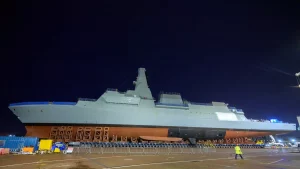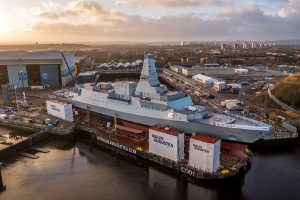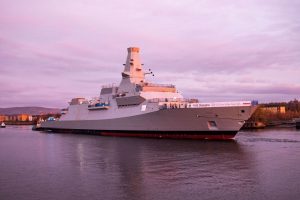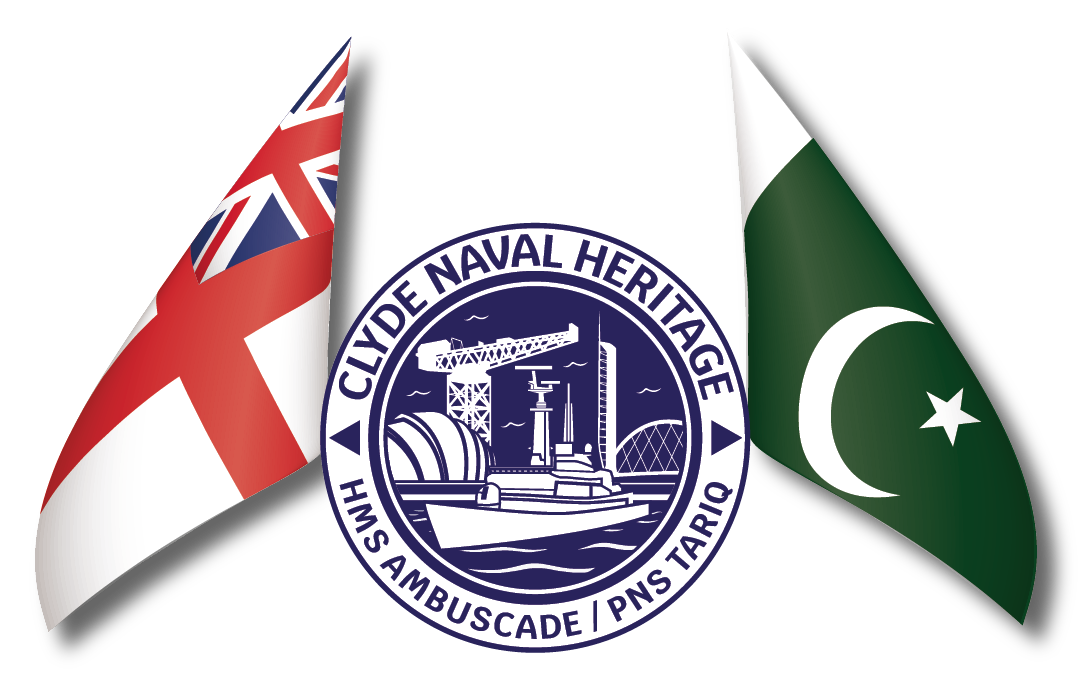HMS Glasgow (Type 26)
HMS Glasgow is the first of eight planned Type 26 frigates, also known as the City-class frigates, currently being constructed for the Royal Navy. The Type 26 ships are designed to replace the aging Type 23 frigates and serve as the backbone of the Royal Navy’s surface fleet for the coming decades. Named after the Scottish city of Glasgow, the ship represents a new chapter in naval warfare, integrating cutting-edge technology and multi-role capabilities.

Development and Construction of the Type 26 Frigate Program
The Genesis of the Type 26 Program
The development of the Type 26 frigates began in the late 2000s as part of the Royal Navy’s Future Surface Combatant (FSC) program. The goal was to develop a highly capable, versatile ship that could perform a wide array of tasks, from anti-submarine warfare to humanitarian missions. As tensions in global maritime environments increased, so did the need for a new class of frigates with enhanced adaptability.
The Type 23 frigates, which the Type 26 is designed to replace, had been in service since the 1990s, and although highly effective, their aging systems required modernisation. The Royal Navy needed a platform that could protect the UK’s interests at sea while also contributing to international security operations, both independently and within NATO operations.
In 2015, the UK government announced the full-scale development of the Type 26 program, with BAE Systems serving as the main contractor. The ship’s design was heavily influenced by lessons learned from recent naval conflicts, the evolving nature of naval warfare, and the need to address both surface and subsurface threats.
The Role of the Clyde Shipyards
The shipyards along the River Clyde were once the busiest in the world. Although the number of operational shipyards had decreased by the 21st century, those that remained continued to produce advanced warships for the Royal Navy. BAE Systems’ Govan and Scotstoun shipyards on the Clyde were selected as the principal sites for the construction of the new Type 26 frigates.
Construction of HMS Glasgow officially began at the BAE Systems Govan yard in July 2017, with the ship set to be completed at the Scotstoun shipyard, both of which are located on the River Clyde. This choice of location underscored the enduring importance of the Clyde to British naval engineering and shipbuilding. These shipyards had previously built earlier versions of HMS Glasgow and many other vessels that served during World War II and the Cold War, reinforcing a continuous historical link between the Royal Navy and the Clyde.
The Design and Capabilities of HMS Glasgow
HMS Glasgow is the first in the Type 26 class of frigates, measuring 149.9 meters in length with a displacement of 6,900 tonnes. Designed with stealth technology and equipped with advanced sensors, the ship focuses on anti-submarine warfare, but it also has the flexibility to carry out multiple roles, such as air defence and humanitarian missions.

Key features of HMS Glasgow include:
Flexible Mission Bay: The mission bay is capable of housing helicopters, unmanned systems, and boats, allowing for the ship to quickly adapt to a variety of missions.
State-of-the-art Weaponry: The ship is armed with a Sea Ceptor air defence missile system, as well as a 5-inch medium-calibre gun and torpedoes for anti-submarine warfare.
Quiet Operation: HMS Glasgow is designed to be among the quietest ships in the world, a critical feature for tracking and engaging submarines.
The ship also incorporates the latest in environmental and sustainability technologies, including systems designed to reduce emissions and fuel consumption, reflecting modern concerns about environmental impact.

HMS Glasgow and the Legacy of Previous Namesakes
The current HMS Glasgow (Type 26) is not the first Royal Navy vessel to carry the name. Several warships named HMS Glasgow have served the Royal Navy with distinction over the past two centuries.
1. The First HMS Glasgow (1745): A fifth-rate frigate that served during the War of Austrian Succession.
2. The Second HMS Glasgow (1814): A fifth-rate frigate that fought during the Napoleonic Wars.
3. The Third HMS Glasgow (1909): A Town-class light cruiser that saw action during World War I, most notably at the Battle of the Falkland Islands.
4. The Fourth HMS Glasgow (1937): A Town-class cruiser that served with distinction during World War II, playing a key role in Atlantic and Mediterranean naval engagements.
Each of these vessels contributed to the Royal Navy’s naval supremacy, and the new HMS Glasgow carries this proud legacy forward into the 21st century.
Relationship with the City of Glasgow
The city of Glasgow has long shared a unique bond with the Royal Navy due to the Clyde shipyards. The naming of HMS Glasgow reflects the Royal Navy’s desire to honour this relationship and the city’s contributions to the United Kingdom’s naval defence.
In return, HMS Glasgow embodies Glasgow’s resilience, innovation, and industrial spirit. It’s a source of pride not just for the shipbuilders of the Clyde but for the wider Scottish community. Ceremonies and events surrounding the ship’s launch have further strengthened these ties, with significant civic involvement from the people of Glasgow. The ship is expected to foster closer connections between the Royal Navy and local communities through visits, open days, and participation in civic events.
The Future of HMS Glasgow
As the first of the Type 26 frigates, HMS Glasgow is scheduled to enter service in the late 2020s, followed by seven more sister ships, each named after major UK cities. These vessels will serve well into the 2050s, taking part in NATO operations, protecting sea lanes, and enhancing British naval power globally.
Moreover, the design of the Type 26 frigates has also attracted international attention, with countries like Australia and Canada adopting similar designs for their naval fleets, cementing the ship’s place in modern maritime history.
HMS Glasgow represents a bridge between the Royal Navy’s past and future, embodying both the rich shipbuilding tradition of the River Clyde and the cutting-edge technology needed for 21st-century naval warfare. Its relationship with the River Clyde is symbolic of the enduring importance of Scottish shipbuilding to British naval defence, reinforcing the Clyde’s legacy as one of the most important shipbuilding rivers in the world. As the first of the Type 26 frigates, HMS Glasgow is not just a warship, but a testament to the city and river from which it was born.

